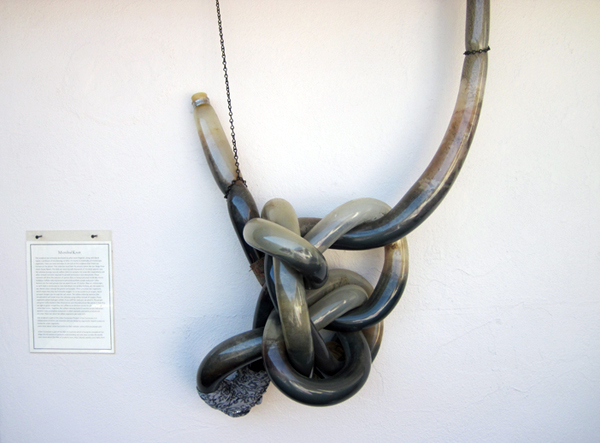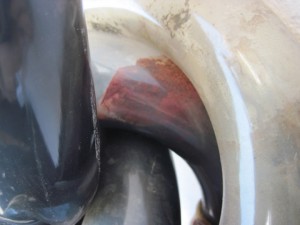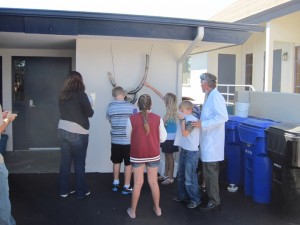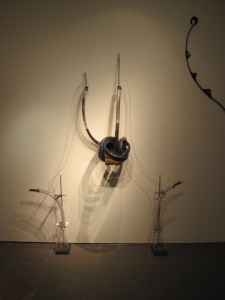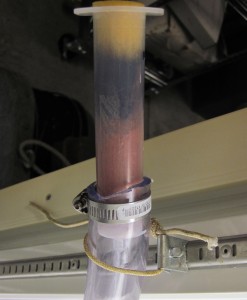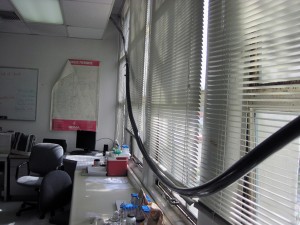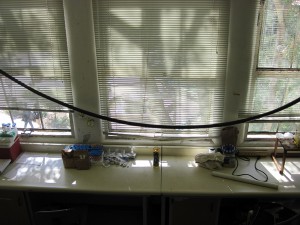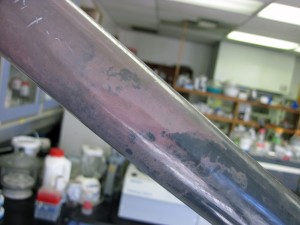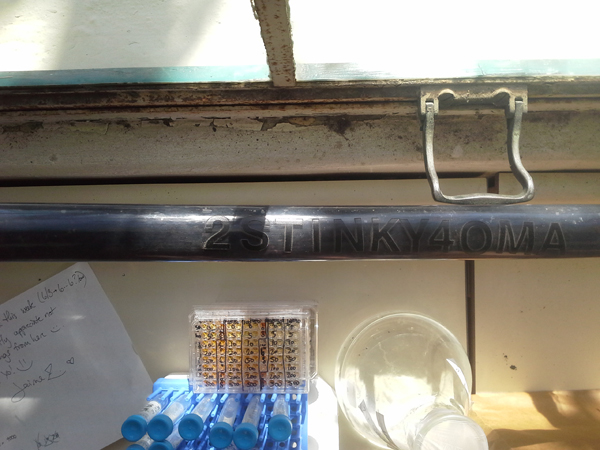This project was a collaboration with local artist and high school teacher, Jason Rogalski. This was part of the Urban Succession project, funded in part by a DNA of Creativity grant, and was exhibited at the Oceanside Museum of Art (though they made us take out all the foul-smelling muck and just display the empty knot. Some people are no fun at all). This is a sculpture that is essentially a giant Winogradsky Column, named after the great environmental microbiologist, Sergei Winogradsky. The basic idea is to take an environmental sample and create conditions that enrich for growth a certain group of microorganisms. We took anoxic San Diego River sediment, added cellulose, sulfate and other nutrients, put it all into a 20 foot long clear plastic tube, stoppered up the ends, tied it into a knot and hung it up outside Jason’s school. Over time various sulfur cycling microbes grew, including sulfate reducing bacteria that make H2S and purple and green sulfur bacteria that photosynthesize using this H2S.
Normally one allows the gases to vent out the top of the column, but we kept ours sealed to prevent it from drying up. As a result the gases built up and the diameter of the tube doubled, at least. We created a lesson plan in which we conducted an experiment to demonstrate whether the gas was flammable. (Yes, it was). After observing the controlled geyser of flame, the students investigated the sights, sounds, textures and smells of this piece:
And speaking of the smells…
We initially installed this at OMA, but the small was starting to offend people. We attempted heroic measures, like the smell and water traps seen on either side of the piece (adding a nice sculptural element, in themselves).
The stink traps were columns of iron oxide (to capture H2S) and graphite (to capture other organics). Brilliant, but we soon realized that H2S was diffusing through the walls of the plastic tubing. So we were screwed. Next time, use glass! (How much would that cost, anyway?)
But the Microbial Knot found a good home in my lab, unwound into its linear form.
The students didn’t seem to mind the odor, but I set a Saint Candle near it, just in case.
It soon developed a nice culture of purple sulfur bacteria.
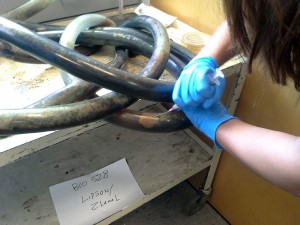
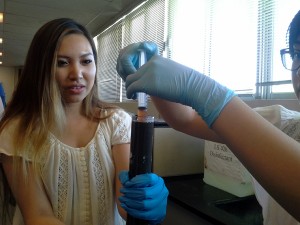
And it has lived on as a teaching tool for my Microbial Ecology class.
And it wears its rejection by the Art Establishment as a badge of honor!
